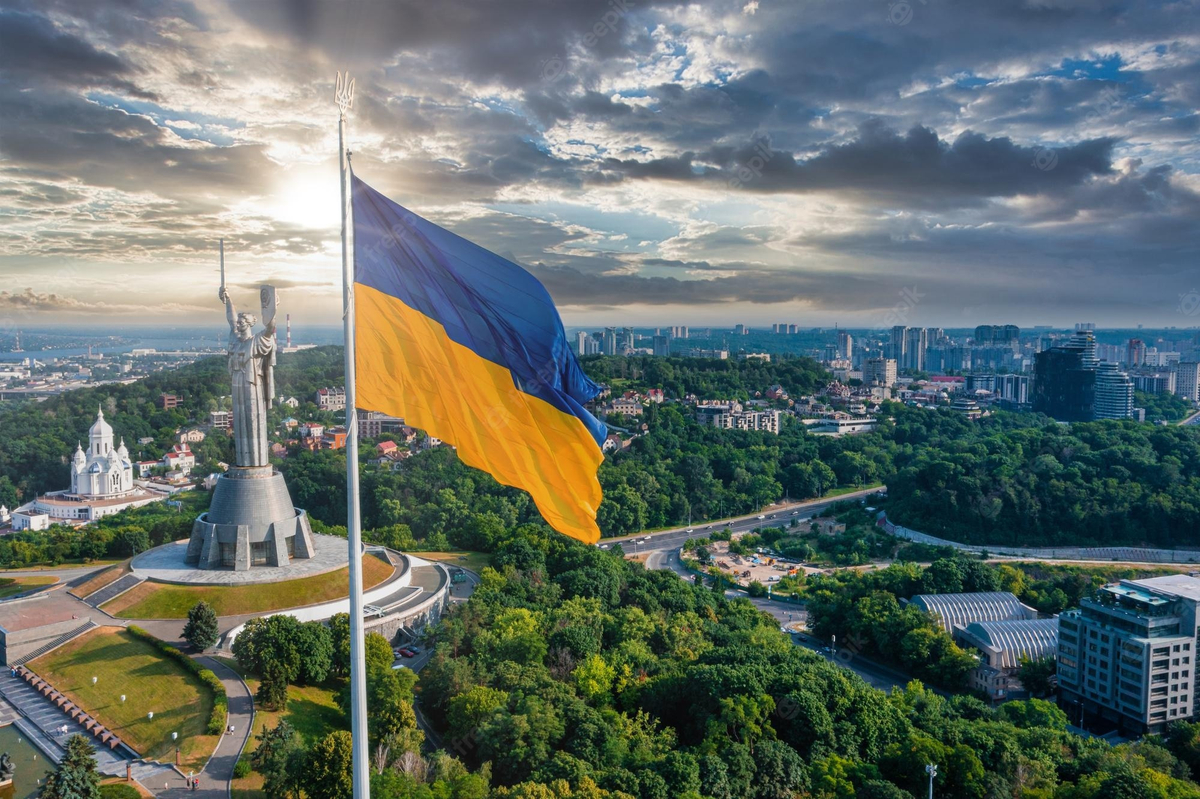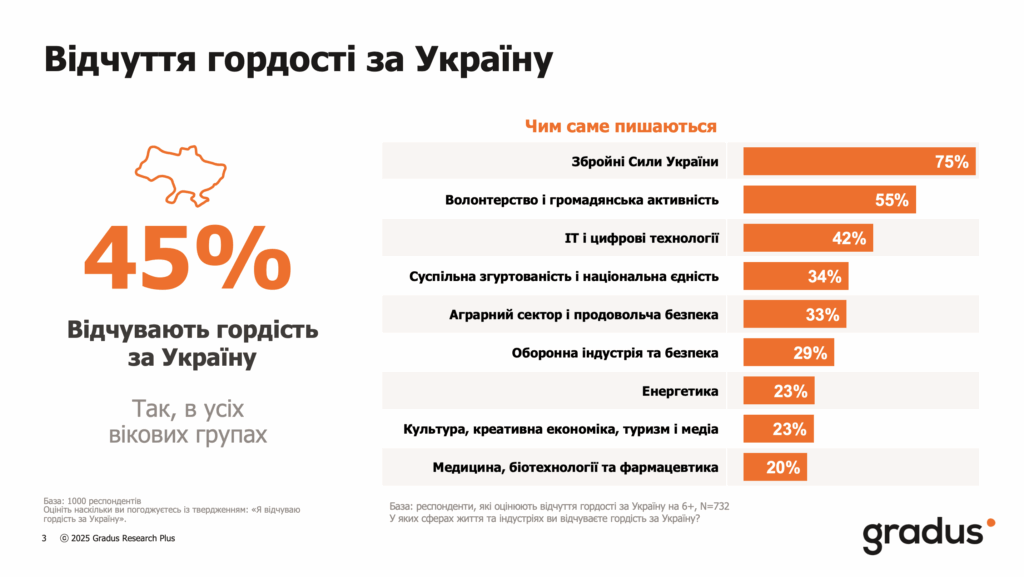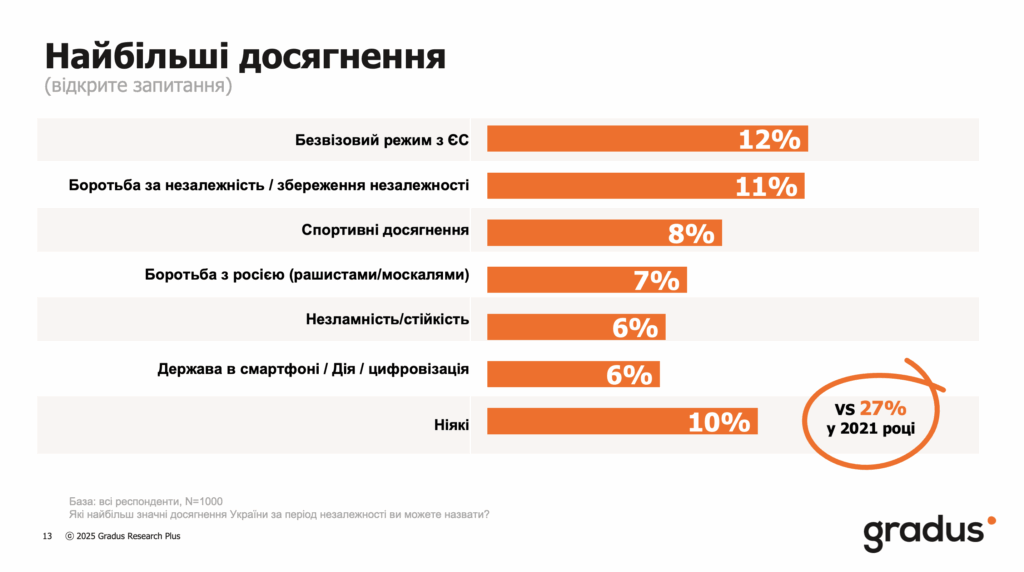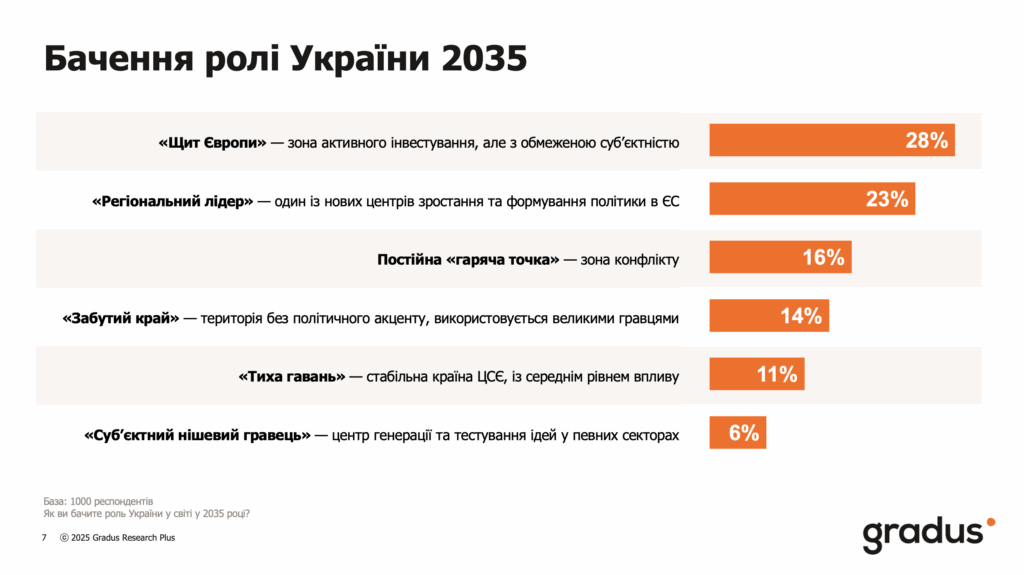“The Shield of Europe with a Human Face: How Citizens See Ukraine’s Role in the World and Their Own Future
20 November 22:03 INFOGRAPHICS
INFOGRAPHICS
Under the influence of the war for the country’s existence and independence, Ukrainians have become more aware of national achievements and priorities. This is reported by "Komersant Ukrainian" with reference to the results of the Gradus survey.
The vast majority of Ukrainians of all ages (75%) are proud of our Armed Forces. Volunteer and civic engagement (55%) ranks second, followed by digital technologies (42%). At the same time, the share of those who do not see any achievements of the state has almost tripled compared to pre-war 2021.
Contribution to the country’s development and independence
The survey respondents noted that these three areas (the Armed Forces – 80%, volunteers – 76%, and IT – 71%) have been the drivers of the country’s development over the years of independence. The agricultural sector (62%), social cohesion (57%), and the defense industry (54%) also received high marks. In contrast, respondents see the least significant contribution in the law enforcement and judicial system (63% of distrust), public administration and institutional capacity.

The situation is similar with the question about the country’s potential for development and resilience by 2035. The Armed Forces of Ukraine also ranked first with 80%, followed by IT and digital technologies (75%), and the agricultural sector and food security, volunteerism and civic engagement, and the defense industry were tied for third with 69%.
Changing perception of achievements
The survey highlighted that the war crystallized national identity and forced a reassessment of real achievements. In the 2021 survey, 27% of respondents could not identify any significant achievements of Ukraine. In 2025, this figure dropped to 10%, indicating an increase in the value of the state in the eyes of citizens. Among the specific historical achievements, the visa-free regime with the EU (12%) and preservation of independence (11%) are leading.

The vector of the future: Ukraine 2035
When asked about the development potential for the next 10 years, Ukrainians place their bets on MilitaryTech, IT, and the agricultural sector. Citizens see Ukraine’s role on the global stage as a “shield of Europe” – a zone of active investment, which, however, has partially limited subjectivity.

In response to an open-ended question, Ukrainians named the defense industry, IT and digitalization, the agricultural sector and food security, the army, construction, and energy as the areas with the greatest development potential.
Overall, the majority of respondents see Ukraine’s future in a positive light. A total of 47% gave positive answers to the open-ended question about the future (peaceful, prosperous, free, optimistic, bright). Only 16% gave negative answers (difficult, in decline, no future).
Conflict of paternalism and responsibility
Compared to the answers given by Ukrainians in pre-war 2021, in the first year of the war and at the end of 2025, the share of those who rely on the state for their well-being has increased. At the same time, when it comes to the interference of the state in the personal affairs of citizens and the balance of their own and public interests, Ukrainians are mostly inclined to individualism and freedom.
The survey results highlight an interesting conflict in the worldview of Ukrainians in 2025. On the one hand, there is a growing demand for paternalism – we expect security and well-being from the state. On the other hand, Ukrainians remain strong individualists for whom freedom and non-interference in their personal lives are an absolute value. The balance between these two vectors will determine the social contract in the next 10 years,” comments on the results of the study sociologist, CEO and founder of the research company Gradus Yevhenia Blyzniuk.
It should be noted that the sociological research was conducted by Gradus using a self-administered questionnaire in the Gradus mobile application. The sample reflects the population structure of cities with more than 50 thousand residents aged 18-60 by gender, age, settlement size, and region, excluding the temporarily occupied territories and territories of active hostilities.
Read us on Telegram: important topics – without censorship









